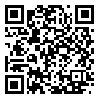Volume 9, Issue 3 (Summer 2020)
Arch Hyg Sci 2020, 9(3): 189-192 |
Back to browse issues page
Download citation:
BibTeX | RIS | EndNote | Medlars | ProCite | Reference Manager | RefWorks
Send citation to:



BibTeX | RIS | EndNote | Medlars | ProCite | Reference Manager | RefWorks
Send citation to:
Mousavi S M, Karimi A, Zakerian S A, Mehravar M. Design and Validation of an Iranian Application Software for the Evaluation of the Permit-to-work System in Process Industries. Arch Hyg Sci 2020; 9 (3) :189-192
URL: http://jhygiene.muq.ac.ir/article-1-454-en.html
URL: http://jhygiene.muq.ac.ir/article-1-454-en.html
1- Msc, Department of Occupational Health Engineering, School of Public Health, Tehran University of Medical Sciences, Tehran, Iran
2- Associate Professor, Department of Occupational Health Engineering, School of Public Health, Tehran University of Medical Sciences, Tehran, Iran
3- Professor, Department of Occupational Health Engineering, School of Public Health, Tehran University of Medical Sciences, Tehran, Iran
4- Msc, Department of Health Information Management and Medical Informatics, School of Paramedical Sciences, Tehran University of Medical Sciences, Tehran, Iran
2- Associate Professor, Department of Occupational Health Engineering, School of Public Health, Tehran University of Medical Sciences, Tehran, Iran
3- Professor, Department of Occupational Health Engineering, School of Public Health, Tehran University of Medical Sciences, Tehran, Iran
4- Msc, Department of Health Information Management and Medical Informatics, School of Paramedical Sciences, Tehran University of Medical Sciences, Tehran, Iran
Abstract: (2500 Views)
| Background & Aims of the Study: The most important causes of accidents in process industries are related to overhaul and maintenance activities, as well as the absence or failure of a permit-to-work system. The present study aimed to design and validate an application to evaluate the permit-to-work system in the process industries. Materials and Methods: The present applied–developmental study was conducted in 2019. Initially, 25 experts determined the data elements and the necessary capacities of the application. Original idea of the application software was coded using C sharp in the Microsoft visual 2017. The design was performed in accordance with the SDLC model. Finally, the Questionnaire for User Interface Satisfaction (QUIS) was used to evaluate the usability and user satisfaction of the final version of the application software. Results: In the designed application software, the clients can evaluate the permit-to-work system based on the defined access limit. According to the scores, the performance of the permit-to-work system is classified as poor, average, good, or excellent, which are actually the outputs of the application software. Based on the results of the QUIS, the overall score of user satisfaction with the application software was 7.71 out of 9. |
Type of Study: Original Article |
Subject:
Occuptional Health
Received: 2020/06/21 | Accepted: 2020/07/26 | Published: 2020/07/18
Received: 2020/06/21 | Accepted: 2020/07/26 | Published: 2020/07/18
References
1. 1. Dambros JW, Trierweiler JO, Farenzena M. Oscillation detection in process industries-Part I: Review of the detection methods. Journal of Process Control. 2019;78:108-23. Link [DOI:10.1016/j.jprocont.2019.04.002]
2. Abílio Ramos M, Droguett EL, Mosleh A, das Chagas Moura M, Ramos Martins M. Revisiting past refinery accidents from a human reliability analysis perspective: The BP Texas City and the Chevron Richmond accidents. The Canadian Journal of Chemical Engineering. 2017;95(12):2293-305. Link [DOI:10.1002/cjce.22996]
3. Bogard W. The Bhopal tragedy: language, logic, and politics in the production of a hazard: Routledge; 2019. Link [DOI:10.4324/9780429309083]
4. Danial SN, Smith J, Khan F, Veitch B. Human-like sequential learning of escape routes for virtual reality agents. Fire technology. 2019;55(3):1057-83. Link [DOI:10.1007/s10694-019-00819-7]
5. Jahangiri M, Hoboubi N, Rostamabadi A, Keshavarzi S, Hosseini AA. Human error analysis in a permit to work system: a case study in a chemical plant. Safety and health at work. 2016;7(1):6-11. Link [DOI:10.1016/j.shaw.2015.06.002]
6. Zare A, Yazdani Rad S, Dehghani F, Omidi F, Mohammadfam I. Assessment and analysis of studies related human error in Iran: A systematic review. Health and Safety at Work. 2017;7(3):267-78.Link
7. Hoboubi N, Jahangiri M, Keshavarzi S. Introduction of engineering approach technique in quantitative human error assessment; case study in permit to work system of a petrochemical plant. Iran Occupational Health. 2014;11(5). .Link
8. Ghahramani A. Permit to Work System Conformity Analysis based on the System Standard Criteria in an Oil and Gas Extraction Company. Iran Occupational Health Journal. 2007;4(1):10-4. Link
9. Bariha N, Mishra IM, Srivastava VC. Fire and explosion hazard analysis during surface transport of liquefied petroleum gas (LPG): A case study of LPG truck tanker accident in Kannur, Kerala, India. Journal of loss prevention in the process industries. 2016;40:449-60. Link [DOI:10.1016/j.jlp.2016.01.020]
10. Zhou L, Li X, Guan L, Chen J, Guo B, Wu W, et al. Home noninvasive positive pressure ventilation with built-in software in stable hypercapnic COPD: a short-term prospective, multicenter, randomized, controlled trial. International journal of chronic obstructive pulmonary disease. 2017;12:1279. Link [DOI:10.2147/COPD.S127540]
11. Rani SBASU. A detailed study of Software Development Life Cycle (SDLC) models. International Journal Of Engineering And Computer Science. 2017;6(7). Link
12. Roberts VL, Fels DI. Methods for inclusion: Employing think aloud protocols in software usability studies with individuals who are deaf. International Journal of Human-Computer Studies. 2006;64(6):489-501. Link [DOI:10.1016/j.ijhcs.2005.11.001]
13. Karimi A, Jamshidi Slukloei HR, Eslamizad S. Designing SQCRA as a software to semi-quantitative chemical risk assessment in workplace. Journal of Occupational Hygiene Engineering. 2014;1(2):47-56. Link
14. Jafari Mj, noorizadeh n, khodakarim S. Experimental validation of a local ventilation design software. 2018;14(16):107-115.Link
Send email to the article author
| Rights and permissions | |
 |
This work is licensed under a Creative Commons Attribution-NonCommercial 4.0 International License. |









